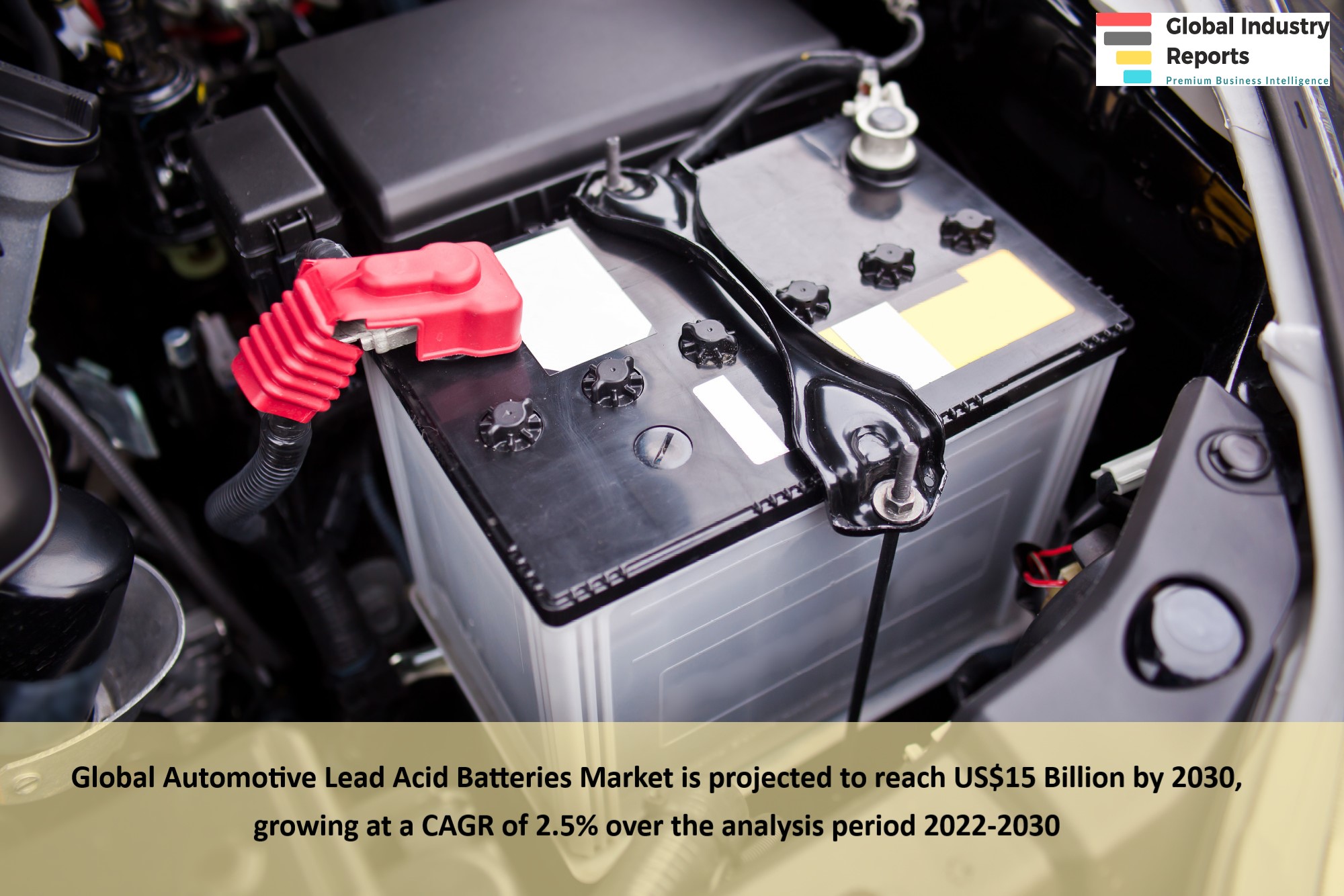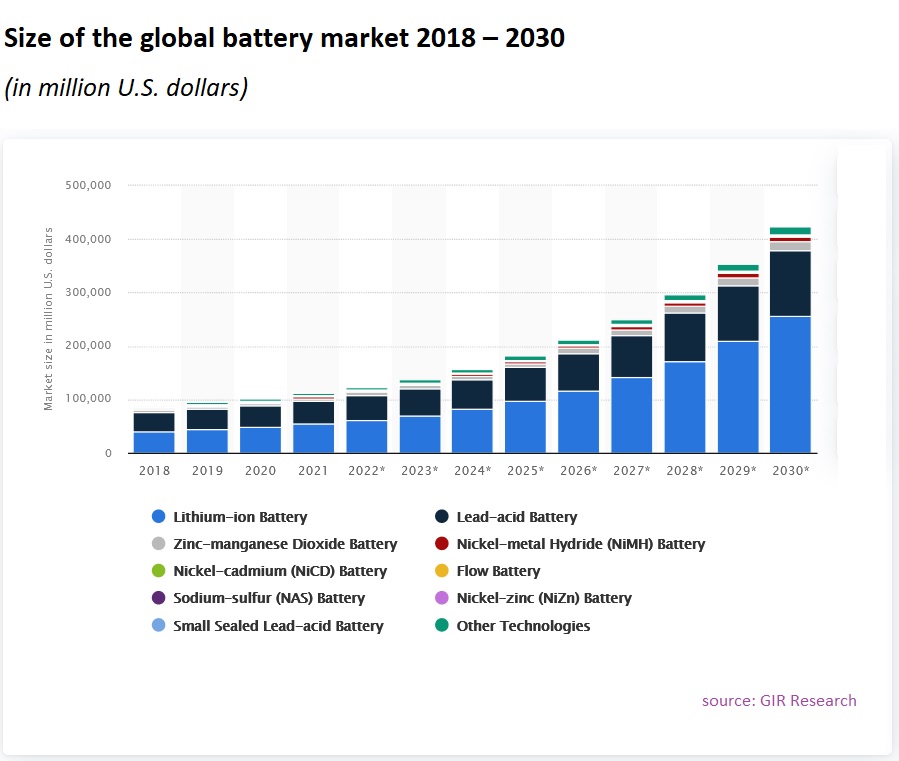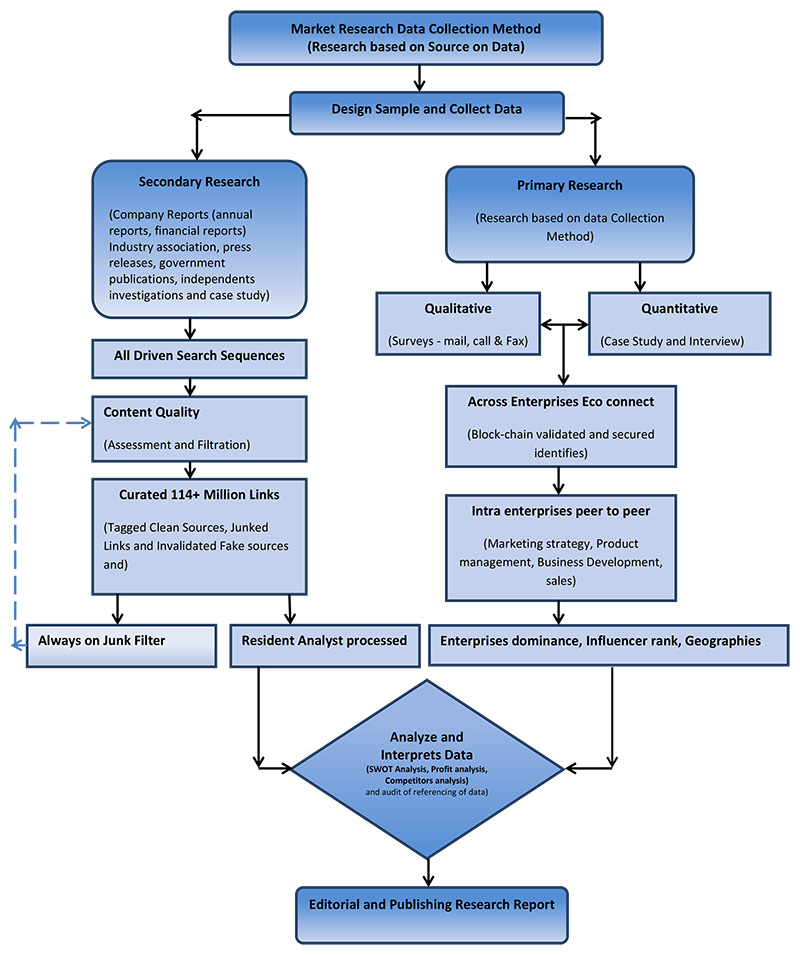Report Overview
- Understand the latest market trends and future growth opportunities for the Automotive Lead Acid Batteries industry globally with research from the Global Industry Reports team of in-country analysts – experts by industry and geographic specialization.
- Key trends are clearly and succinctly summarized alongside the most current research data available. Understand and assess competitive threats and plan corporate strategy with our qualitative analysis, insight, and confident growth projections.
- The report will cover the overall analysis and insights in relation to the size and growth rate of the “Automotive Lead Acid Batteries Market” by various segments at a global and regional level for the 2010-2030 period, with 2010-2021 as historical data, 2022 as a base year, 2023 as an estimated year and 2023-2030 as forecast period.
Description:
- In the changed post COVID-19 business landscape, the global market for Automotive Lead Acid Batteries estimated at US$12.3 Billion in the year 2022, is projected to reach a revised size of US$15 Billion by 2030, growing at a CAGR of 2.5% over the analysis period 2022-2030.
- Aftermarket Passenger Cars, one of the segments analyzed in the report, is projected to record a 3.3% CAGR and reach US$6.2 Billion by the end of the analysis period. Taking into account the ongoing post pandemic recovery, growth in the Aftermarket Commercial Vehicles segment is readjusted to a revised 2% CAGR for the next 8-year period.
- The Automotive Lead Acid Batteries market in the U.S. is estimated at US$3.4 Billion in the year 2022. China, the world`s second largest economy, is forecast to reach a projected market size of US$2.9 Billion by the year 2030 trailing a CAGR of 4.4% over the analysis period 2022 to 2030. Among the other noteworthy geographic markets are Japan and Canada, each forecast to grow at 1.3% and 2.2% respectively over the 2022-2030 period. Within Europe, Germany is forecast to grow at approximately 1.7% CAGR. Led by countries such as Australia, India, and South Korea, the market in Asia-Pacific is forecast to reach US$1.9 Billion by the year 2030.
MARKET DATA INCLUDED
- Unit Sales, Average Selling Prices, Market Size & Growth Trends
- COVID-19 Impact and Global Recession Analysis
- Analysis of US inflation reduction act 2022
- Global competitiveness and key competitor percentage market shares
- Market presence across multiple geographies – Strong/Active/Niche/Trivial
- Online interactive peer-to-peer collaborative bespoke updates
- Market Drivers & Limiters
- Market Forecasts Until 2030, and Historical Data to 2015
- Recent Mergers & Acquisitions
- Company Profiles and Product Portfolios
- Leading Competitors
The Report Includes:
- The report provides a deep dive into details of the industry including definitions, classifications, and industry chain structure.
- Analysis of key supply-side and demand trends.
- Detailed segmentation of international and local products.
- Historic volume and value sizes, company, and brand market shares.
- Five-year forecasts of market trends and market growth.
- Robust and transparent research methodology conducted in-country.
- Qualitative and quantitative analysis of the market based on segmentation involving both economic as well as non-economic factors.
- Provision of market value (USD Billion) data for each segment and sub-segment.
- Analysis by geography, region, Country, and its states.
- A brief overview of the commercial potential of products, technologies, and applications.
- Company profiles of leading market participants dealing in products category.
- Description of properties and manufacturing processes.
- marketed segments on the basis of type, application, end users, region, and others.
- Discussion of the current state, setbacks, innovations, and future needs of the market.
- Examination of the market by application and by product sizes; utility-scale, medium scale and small-scale.
- Country-specific data and analysis for the United States, Russia, China, Germany, United Kingdom, France, Japan, Israel, Saudi Arabia, South Korea, United Arab Emirates, Canada, Switzerland, Australia, India, Italy, Turkey, Qatar, Sweden, Spain, Belgium, Netherlands, Norway, Singapore, Egypt, Denmark, Austria, Vietnam, Brazil, Argentina, Mexico, South Africa, and others.
- Coverage of historical overview, key industrial development and regulatory framework.
- Analysis of competitive developments, such as contracts & agreements, expansions, new product developments, and mergers & acquisitions in the market.
- A look at the opportunities in the market for stakeholders and provide a competitive landscape of the market leaders.
Reports Scope and Segments:
| Report Attribute | Details |
| Market size in 2022 | US $12.3 Billion |
| Market size forecast in 2030 | US $15 Billion |
| Growth Rate | CAGR of 2.5% from 2022 to 2030 |
| Base year for estimation | 2022 |
| Historical data | 2015 – 2022 |
| Forecast period | 2023 – 2030 |
| Quantitative units | Revenue in USD million and CAGR from 2023 to 2030 |
| Report coverage | Revenue forecast, company ranking, competitive landscape, growth factors, trends, DROT Analysis, Market Dynamics and Challenges, and Strategic Growth Initiatives
COVID-19 Impact, Market Growth Trends, Market Limiters, Competitive Analysis & SWOT for Top Competitors, Mergers & Acquisitions, Company Profiles, Product Portfolios Market Size, Market Shares, Market Forecasts, Market Growth Rates, Units Sold, and Average Selling Prices. |
| Segments covered | Technology, Equipment Type, Product, Application and Region |
| Regional scope | North America; Europe; Asia Pacific; Latin America; Middle East and Africa and rest of the world |
| Country scope | United States, Russia, China, Germany, United Kingdom, France, Japan, Israel, Saudi Arabia, South Korea, United Arab Emirates, Canada, Switzerland, Australia, India, Italy, Turkey, Qatar, Sweden, Spain, Belgium, Netherlands, Norway, Singapore, Egypt, Denmark, Austria, Vietnam, Brazil, Argentina, Mexico, South Africa, and others. |
| Key companies profiled | Akkumulatorenfabrik MOLL GmbH + Co. KG; Amara Raja Batteries Ltd.; ATLASBX Co., Ltd.; B. B. Battery; Banner Batterien GmbH; Baterias Willard; Bosch Automotive Batteries; Brookfield Business Partners; C&D Technologies, Inc.; Camel Group Co. Ltd.; Chaowei Power Holdings Limited; Clarios; Coslight Technology International Group Co. Ltd.; Crown Battery Manufacturing Company; CSB Battery Company Limited; EAS Batteries GmbH; East Penn Manufacturing Co.; Enersol Technologies Inc.; EnerSys Inc.; Enertech International; Exide Industries Ltd.; Fengfan Co., Ltd.; FIAMM Energy Technology S.p.A.; FIRST NATIONAL BATTERY; Fujian Quanzhou Dahua Battery Co. Ltd.; Fullriver Battery USA; Furukawa Electric Co., Ltd.; GS Yuasa Corp.; Hankook AltasBX; Harbin Coslight Power; Hawker Powersource; HBL Power Systems Ltd.; Heliar; Hitachi Chemical Co., Ltd.; HOPF Elektronik GmbH; Hoppecke Batterien GmbH & Co. KG; Jayachandran Industries Ltd; Johnson Controls Inc.; Leoch International Technology; Lion Batteries Holdings Pty Ltd.; Luminous Power Technologies Pvt. Ltd.; Magneti Marelli Cofap Automotive Lighting; Microtex Energy Pvt Ltd; MK Battery; Moura Batteries; Narada Power Source Co. Ltd.; Northstar Battery Company, LLC; Okaya Power; Panasonic Corporation; Ritar Power; Rolls Battery; Shandong Sacred Sun Power Sources Co. Ltd.; SiteTel Sweden AB (NorthStar); Su-Kam Power Systems Ltd.; TAB Batteries; Teledyne Technologies; Trojan Battery Company; Tudor Batteries; U.S. Battery Manufacturing Company; Unipar Indupa; VARTA AG; XUPAI Battery; Yokohama Batteries; Zhangzhou Huawei Power Supply Technology Co., Ltd.; ZIBO TORCH ENERGY Co., LTD. and others. |
| Customization scope | Free report customization (equivalent up to 20 analyst’s working days) with purchase. Addition or alteration to country, regional & segment scope. |
| Report Format | PDF, PPT, Excel & Online User Account |
Report Segmented by:
By Battery Type:
- Flooded Automotive Batteries
- Enhanced Flooded Batteries
- Absorbent Glass Mat (AGM) Automotive Lead Acid Battery
- VRLA Batteries
By Technology:
- Internal Combustion Engine (ICE) Lead Acid Battery
- Hybrid Lead Acid Battery
- Electric Lead Acid Battery
- SLI Batteries
- Micro Hybrid Batteries
By Vehicle Type:
- Passenger Cars
- Commercial Vehicles (LCVs/HCVs)
- Motorcycles
- Three Wheelers
By Sales Channel:
- OEMs
- Aftermarket
By Region:
- North America
- Europe
- Asia Pacific
- Latin America
- Middle East & Africa
- Rest Of The World
Companies Covered in Report:
| Akkumulatorenfabrik MOLL GmbH + Co. KG | Hitachi Chemical Co., Ltd. |
| Amara Raja Batteries Ltd. | HOPF Elektronik GmbH |
| ATLASBX Co., Ltd. | Hoppecke Batterien GmbH & Co. KG |
| B. B. Battery | Jayachandran Industries Ltd |
| Banner Batterien GmbH | Johnson Controls Inc. |
| Baterias Willard | Leoch International Technology |
| Bosch Automotive Batteries | Lion Batteries Holdings Pty Ltd. |
| Brookfield Business Partners | Luminous Power Technologies Pvt. Ltd. |
| C&D Technologies, Inc. | Magneti Marelli Cofap Automotive Lighting |
| Camel Group Co. Ltd. | Microtex Energy Pvt Ltd |
| Chaowei Power Holdings Limited | MK Battery |
| Clarios | Moura Batteries |
| Coslight Technology International Group Co. Ltd. | Narada Power Source Co. Ltd. |
| Crown Battery Manufacturing Company | Northstar Battery Company, LLC |
| CSB Battery Company Limited | Okaya Power |
| EAS Batteries GmbH | Panasonic Corporation |
| East Penn Manufacturing Co. | Ritar Power |
| Enersol Technologies Inc. | Rolls Battery |
| EnerSys Inc. | Shandong Sacred Sun Power Sources Co. Ltd. |
| Enertech International | SiteTel Sweden AB (NorthStar) |
| Exide Industries Ltd. | Su-Kam Power Systems Ltd. |
| Fengfan Co., Ltd. | TAB Batteries |
| FIAMM Energy Technology S.p.A. | Teledyne Technologies |
| FIRST NATIONAL BATTERY | Trojan Battery Company |
| Fujian Quanzhou Dahua Battery Co. Ltd. | Tudor Batteries |
| Fullriver Battery USA | U.S. Battery Manufacturing Company |
| Furukawa Electric Co., Ltd. | Unipar Indupa |
| GS Yuasa Corp. | VARTA AG |
| Hankook AltasBX | XUPAI Battery |
| Harbin Coslight Power | Yokohama Batteries |
| Hawker Powersource | Zhangzhou Huawei Power Supply Technology Co., Ltd. |
| HBL Power Systems Ltd. | ZIBO TORCH ENERGY Co., LTD. |
| Heliar |
After Sales Support
- Every updated edition of the report and full data stack will be provided at no extra cost for 24 months.
- Latest 2022 base year report.
- Free Updated edition of 2023 every quarter without any hidden cost.
- No user limitation for the report. Unlimited access within the organization.
- Unrestricted post-sales support at no additional cost
- Free report customization (equivalent up to 10 analyst’s working days) with purchase. Addition or alteration to country, regional & segment scope
- Global Industry Reports will support your post-purchase for a period of 24 months to answer any of your queries related to the following market and to provide you any more data needed, for your analysis.
- Option to purchase regional or selected Chapters from the report.
Key Questions Answered in this Report
- How will the Automotive Lead Acid Batteries market evolve?
- Who are the key players in Automotive Lead Acid Batteries market? What are their strategies?
- What is the competitive landscape?
- What are the needs, challenges, and solutions in Automotive Lead Acid Batteries market?
- What’s the value chain for Automotive Lead Acid Batteries ?
- What’s the forecast for Automotive Lead Acid Batteries market adoption in the next decade?
- What are the drivers for adoption of Automotive Lead Acid Batteries?
- What’s the right price? The right timing?
- Will this market happen at all? How big can it get?











